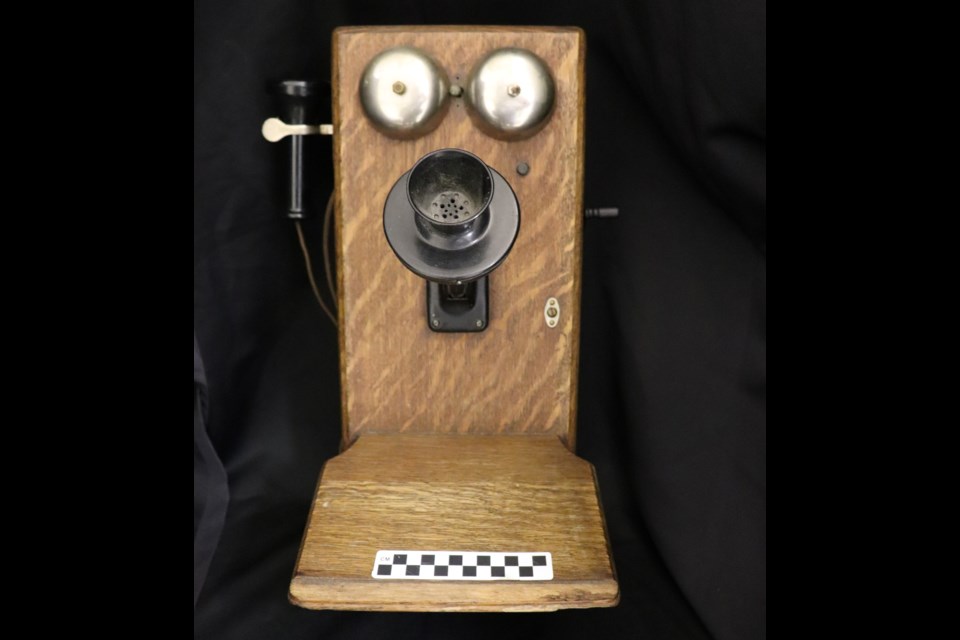Submitted by the staff of the Orillia Museum of Art and History (OMAH).
Today’s featured artifact from the OMAH collection is one which spans decades.
Crank-type box telephones like this one were prevalent in the early 1900s, but how did they work? When a person wanted to place a call, they turned the crank on the side of the box which rang the operator.
Once the operator picked up, the caller would give the name and number of the person they were trying to reach, and the operator would connect them via a switchboard.
In this photograph, the crank is visible at the right of the box, while the gold-coloured circles at the top are the bells that would ring to alert the owners to a phone call. The mouthpiece is at the centre of the photo, and the hearing component is suspended in its cradle at the left of the box. The shelf at the bottom of the phone could be used for writing notes or keeping important phone numbers.
What makes this telephone really interesting, however, is how it was adapted.
Technology evolves so rapidly that brand new purchases can become obsolete within a few years of sale. The owner of this phone decided to evolve this telephone rather than buy a replacement.
Beginning in the 1950s, the rotary phone surged in popularity, leaving the box phone behind in antiquity. In the second photograph you can see that the inner workings of this telephone have been replaced by a rotary dial.
The original mouthpiece and receiver could be used, but the phone could now place calls direct through use of the added rotary dial. The cable still pokes out of the bottom of the box where it would have been plugged into a phone jack.
This is a unique wall phone that shows ingenuity on the part of the owner as it harkens back to two different types of telephones once popular here in Orillia and beyond.
Next week we will feature another object from the OMAH collection that showcases our local history.
